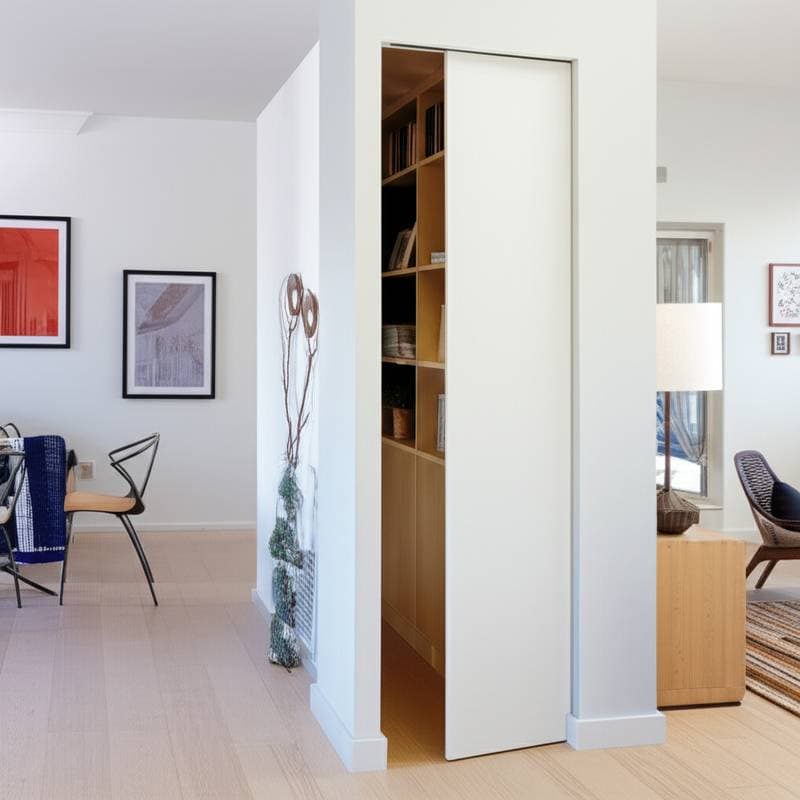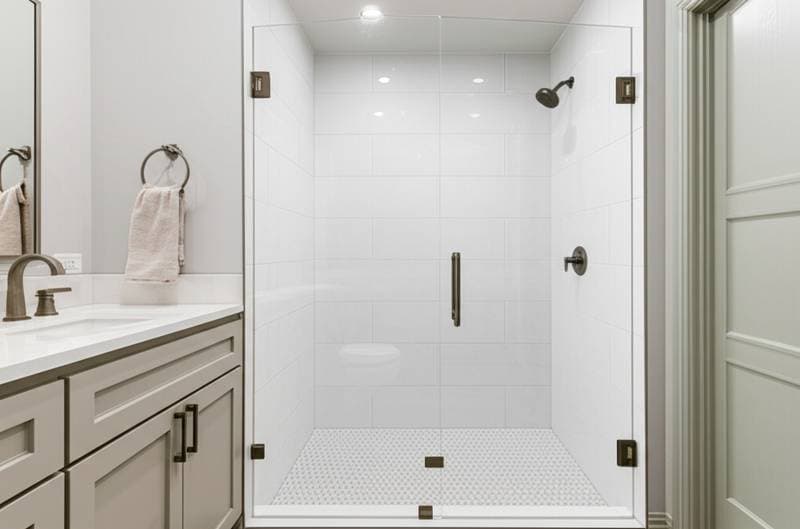Understanding Aging-in-Place Bathroom Remodels
Aging-in-place designs transform bathrooms into spaces that accommodate mobility challenges without sacrificing style or functionality. These remodels prioritize universal accessibility, allowing individuals to remain in their homes comfortably as they age. Key elements include zero-threshold entries, lever-handled faucets, and non-slip surfaces that reduce fall risks and enhance daily routines.
Homeowners benefit from increased safety and convenience, while the real estate market rewards these investments. According to industry forecasts, such renovations yield a 73% ROI in 2025, making them a smart financial choice. This return stems from higher property appraisals and broader buyer appeal in an era of multigenerational living.
Core Features for Safety and Accessibility
Effective aging-in-place bathrooms incorporate proven elements that blend seamlessly into residential aesthetics. Roll-in showers eliminate barriers, providing spacious areas for transfers from wheelchairs. Comfort-height toilets, positioned at 17 to 19 inches, minimize bending and support easier use for all ages.
Grab bars offer essential stability near toilets, showers, and vanities, installed at heights between 33 and 36 inches for optimal reach. Automated lighting and touchless faucets add convenience, activating with motion sensors to illuminate paths and control water flow. Heated floors and towel warmers further elevate comfort, particularly in cooler climates.
Smart technology integrates voice-activated controls for lights, fans, and temperature adjustments, reducing physical effort. These features not only aid current residents but also future-proof the home against evolving needs.
Cost Breakdown and Investment Value
Budgeting for an aging-in-place remodel requires consideration of scope and materials. Basic safety upgrades, such as installing grab bars and non-slip flooring, range from $2,000 to $5,000. Comprehensive projects involving shower conversions and electrical enhancements typically cost $10,000 to $25,000, depending on square footage and location.
High-end options with custom cabinetry and integrated tech can exceed $30,000, yet they maintain strong resale value. Local labor rates and material choices influence totals; for instance, porcelain tiles for flooring add durability at a moderate price point. Financing through home equity loans or accessibility grants can offset expenses for qualifying homeowners.
The 73% ROI projection accounts for recouped costs upon sale, driven by demand for adaptable homes. Appraisers recognize these modifications as premium features, often increasing market prices by 5% to 10% in competitive areas.
Design Tips for a Stylish, Functional Space
Achieve a residential feel by selecting finishes that complement existing decor. Matte-finish grab bars in brushed nickel or oil-rubbed bronze disguise their utilitarian purpose. Curbless showers with linear drains create a spa-like expanse, while frameless glass enclosures maintain openness.
Incorporate built-in benches and fold-down seats within shower walls for discreet support. Opt for lever-style hardware on cabinets to ease operation for arthritic hands. Lighting layers, from recessed ceiling fixtures to under-cabinet strips, ensure even illumination without glare.
Consult universal design principles to scale elements appropriately. For example, position vanities at 34 inches high with knee space underneath for wheelchair users. These thoughtful integrations preserve elegance while prioritizing practicality.
Essential Installation Guidelines
Professional oversight ensures compliance and longevity. Engage licensed plumbers for pipe rerouting and electricians for new circuits to handle increased loads from smart devices.
Install GFCI outlets within six feet of water sources to prevent shocks. Secure grab bars to wall studs or install reinforced backing for firm support capable of holding 250 pounds.
Select flooring with a slip resistance rating per ANSI A137.1, testing coefficient of friction above 0.6 for wet conditions. Provide at least 50 lumens per square foot of lighting for task areas, using adjustable fixtures to accommodate varying needs.
Verify thermostatic mixing valves limit water to 120 degrees Fahrenheit, avoiding scald risks. Always secure local permits for structural, plumbing, or electrical work; unpermitted alterations may invalidate warranties or complicate home sales.
FAQ
How much space is required for wheelchair accessibility?
A minimum five-foot turning radius supports full maneuverability. In compact bathrooms, reconfigure layouts by relocating fixtures or using corner installations to maximize clearance.
Is it possible to install grab bars without a full remodel?
Affirmative, provided anchors attach to studs or solid backing. Steer clear of temporary suction models for reliable, long-term stability.
Which is safer: a walk-in tub or a roll-in shower?
Safety depends on proper installation; walk-in tubs lower entry thresholds to under four inches, easing access for those with limited mobility. Roll-in showers facilitate wheelchair entry with barrier-free designs, offering versatility for diverse needs.
Are permits necessary for these remodels?
Yes, for any plumbing, electrical, or load-bearing modifications. Surface-level changes like painting or hardware swaps generally bypass permitting.
Can these upgrades avoid an institutional appearance?
Careful selection prevents that outcome. Incorporate textured tiles, concealed hardware, and custom wood accents to retain warmth and personalization.
Steps to Launch Your Remodel
Define objectives early, whether focusing on mobility aids or comprehensive safety. Assess current layout for pain points, such as high thresholds or dim lighting.
Establish a realistic budget, factoring in 10% to 20% for contingencies. Solicit bids from at least three contractors certified in accessible design; review portfolios for similar projects.
Explore incentives like tax credits or local rebates for aging-in-place initiatives. Schedule consultations to prototype layouts, ensuring alignment with personal habits and future projections.
Monitor progress with regular site visits, confirming adherence to codes. Upon completion, test all features for usability, making adjustments as needed.
Realizing Long-Term Rewards
These remodels extend independence, fostering confidence in daily activities. Families gain peace of mind knowing the home supports aging loved ones without relocation.
From an investment perspective, enhanced marketability attracts diverse buyers, from young families to retirees. The blend of innovation and tradition positions your property as a forward-thinking asset, yielding enduring value.











